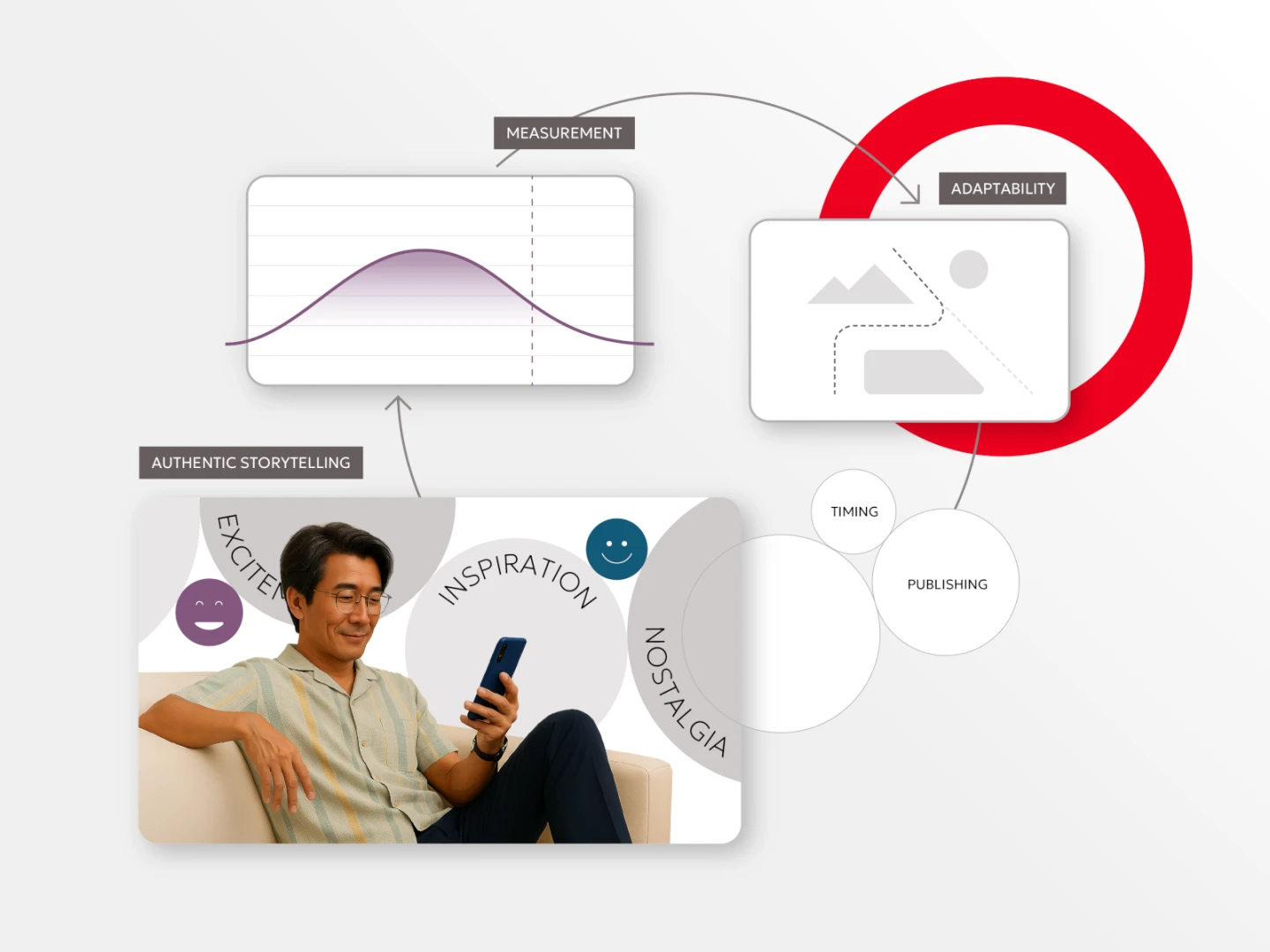Effective brand storytelling has moved far beyond buzzword status to become the status quo. Companies are increasingly embracing corporate storytelling best practices to explain why their business exists and to communicate the values they represent. By shaping a company’s identity in this very personal way, businesses hope to inspire emotional reactions and forge meaningful connections with their consumers.
Corporate storytelling best practices & strategies
Company brand storytelling—specifically, knowing which stories to tell and how to tell them—can be extremely challenging. According to the Content Marketing Institute, 60% of today’s B2B marketers and 56% of B2C marketers report that their biggest hurdle is producing engaging content.
To master the art of brand storytelling like Walmart, the Coca-Cola Company, and Johnson & Johnson, here are five corporate storytelling best practices to help you improve your content strategy and increase engagement.
Corporate storytelling tip 1: Make it authentic
Effective brand storytelling should convey not only what a company does but also who a company is. This important distinction is what allows a brand to tap into the power of emotions. Good, authentic storytelling makes people feel, and feelings lead to sales (because buying is personal). Whereas logic keeps decision-making on an even plane, feelings cultivate brand affinity.
Gallup research indicates that emotionally loyal customers are willing to stick with a brand even if presented with meaningful and available alternatives. Consumers with strong emotional connections to retailers will visit their stores 32% more often and spend 46% more money than customers who lack emotional bonds. Find out more about humanizing your brand here.
Corporate storytelling tip 2: Seize the moment
In an effort to show—not just tell—the world what makes them unique, companies like Johnson & Johnson have shifted towards a more journalistic approach to their corporate communications strategy. Adopting a newsroom mentality consists of constant brainstorming, collaborating and creating based on an understanding of trends and current events.
To apply a newsroom-like strategy to their communications, organizations should employ the following effective brand storytelling best practices:
- Quickly identify the issue: You can win people over by immediately showing that you feel their pain—and provide a solution. Consumers won’t stick around if a message doesn’t capture their attention right away.
- Stay relevant: What’s everyone talking about these days? Is there something people should be talking about, but aren’t? Latch onto a shared social experience whenever appropriate. As you may recall, Oreo famously responded to a partial blackout during Super Bowl XLVII with a simple yet remarkably popular tweet reminding fans they can still “dunk in the dark.”
- Be accountable: Recognize your responsibility in society. Share stories with specific examples of how and why your company operates with integrity. Talk about the impact you’re making in local and global communities. From sustainability to volunteer efforts and giving back, there’s no shortage of things to cover.
- Take a stand: People are especially loyal to brands with a conscience. While companies have traditionally steered clear of anything controversial, today’s consumers want truth and transparency. A Nielsen report found that 81% of millennials “expect their favorite companies to make public declarations of their corporate citizenship.” Don’t be afraid to take a stand on issues that pertain to your industry or services.
Corporate storytelling tip 3: Publish content effectively
Technology is a critical component of telling your brand’s story—from initial concept to the continuous analysis of results. Specifically, you need technology that allows you to customize your content publishing workflow to:
- Create, curate and manage content: Your content management system should support websites hosting multiple pages, images and conversations. A modern platform empowers editors to publish content seamlessly and respond to consumer engagement quickly and efficiently.
- Distribute and amplify publications: Brands need a CMS that enables them to publish across a variety of channels, amplifying existing content while maintaining a consistent experience. A headless CMS can create a flexible omnichannel experience, displaying your content exactly as you want it to appear across multiple channels.
- Analyze and optimize results: A successful brand marketer analyzes how and where content is consumed, delivering personalized, relevant content via the appropriate device. With the right platform in place, marketers can identify what’s performing and what’s not, and then adjust content delivery accordingly.
Corporate storytelling tip 4: Embrace change
Consumers now rely on multiple channels to get the information they want, in the style they want, when they want it. This means that marketers and content contributors have to become masters of those different channels and types of content. Remember to:
- Change the channel: As new devices continue to be introduced, and people become more and more reliant on them, behavior and consumption patterns evolve. Even the most compelling story means nothing if it can’t reach audiences where they are. Consider deploying your stories in a variety of different ways, across various channels.
- Vary the content type: The proliferation of different devices and channels has also helped new content types take shape. Brand storytelling has evolved far beyond the written word. Don’t be afraid to test the waters with compelling video or a user-generated campaign, and then measure the results to see which forms of content resonate the most with your particular audience.
Corporate storytelling tip 5: Measure and react
Just because storytelling is creative doesn’t mean you shouldn’t also be scientific. Your brand story is a work in progress, and it’s important to have a storytelling strategy in place so you can measure the reach and success of each component to discover which topics, types and channels perform best. Make sure you’re paying attention to visits, sessions, channel-specific traffic, social metrics, bounce rates, conversions, leads and any other metric that’s important to your particular business.
How technology impacts effective brand storytelling
Brands have the ability to inspire through creative content, and complementing this creativity with the right technology has a tremendous positive impact on effective brand storytelling. Unfortunately, it’s common for organizations to encounter technical challenges in conveying their brand’s narrative, even when following corporate storytelling best practices. To learn how a modern CMS like Brightspot empowers companies to effectively display the heart and soul behind their brands, schedule a demo.










